
Jerker Lysell and Galina Vinogradova both took their first World Cup victories in the KnockOut sprint which was the second stage of the Nordic Orienteering Tour in Göteborg, Sweden today.
Both Lysell and Vinogradova must be counted as KnockOut sprint specialists. Their only Top 3 World Cup results are from KnockOut sprints – Lysell with second spot in Stockholm last year and Vinogradova with 3rd spot in Stockholm last year.
Comment by winner Lysell: – In the quarterfinal and in the semifinal I hardly looked at the map. But in the final it felt like I wanted to show a bit more.
Maps and GPS-tracking from the semifinals and finals:
Update June 21st, 23:55 CET:
Still no overall NORT results after two stages – kind of kills the NORT concept. Studying the results briefly also indicates that Olav Lundanes – a runner who was far behind in the final in stage 1 and nearly last in the quarterfinals in stage 2 – is around number four five in the overall NORT after two good qualification races. I’m not sure the average viewer would understand why Lundanes is in the top after that performance… Good for Lundanes – not too good for NORT.
Update June 22nd, 00:05 CET:
NORT Overall results after two stages up. 4 x Switzerland in the top among the men Finland-Denmark-Sweden among the women:
| Name |
total time |
Diff |
| 1 |
Daniel Hubmann |
42:16 |
|
| 2 |
Matthias Kyburz |
42:46 |
0:30 |
| 3 |
Matthias Merz |
43:00 |
0:44 |
| 4 |
Matthias Müller |
43:07 |
0:51 |
| 5 |
Olav Lundanes |
43:21 |
1:05 |
| 6 |
Pasi Ikonen |
44:12 |
1:56 |
| 7 |
Fabian Hertner |
44:29 |
2:13 |
| 8 |
Scott Fraser |
45:09 |
2:53 |
| 9 |
Carl Waaler Kaas |
45:55 |
3:39 |
| 10 |
Andreas Kyburz |
46:09 |
3:53 |
| Name |
total time |
Diff |
| 1 |
Merja Rantanen |
44:46 |
|
| 2 |
Maja Alm |
45:17 |
0:31 |
| 3 |
Annika Billstam |
45:23 |
0:37 |
| 4 |
Heidi Bagstevold |
46:07 |
1:21 |
| 5 |
Mari Fasting |
46:07 |
1:21 |
| 6 |
Tove Alexandersson |
46:10 |
1:24 |
| 7 |
Linnea Gustafsson |
46:14 |
1:28 |
| 8 |
Lena Eliasson |
46:38 |
1:52 |
| 9 |
Tone Wigemyr |
46:52 |
2:06 |
| 10 |
Rahel Friederich |
47:26 |
2:40 |
Results Final NORT Stage 2
| Women final |
2040 meter |
6 anmälda |
| 1 |
Galina Vinogradova |
Russia |
10:39 |
| 2 |
Linnea Gustafsson |
Sweden |
10:41 |
| 3 |
Lena Eliasson |
Sweden |
10:47 |
| 4 |
Maja Alm |
Denmark |
10:50 |
| 5 |
Annika Billstam |
Sweden |
11:02 |
| 6 |
Mari Fasting |
Norway |
11:11 |
| Men final |
2290 meter |
6 anmälda |
| 1 |
|
Jerker Lysell |
Sweden |
10:24 |
| 2 |
|
Daniel Hubmann |
Switzerland |
10:26 |
| 3 |
|
Matthias Kyburz |
Switzerland |
10:27 |
| 4 |
|
Scott Fraser |
Great Britain |
10:28 |
| 5 |
|
Frèdèric Tranchand |
France |
10:32 |
| 6 |
|
Matthias Merz |
Switzerland |
10:42 |
Results Semifinal
| Women semi-A |
|
1780 meter |
6 anmälda |
|
| 1 |
|
Linnea Gustafsson |
Sweden |
8:37 |
| 2 |
|
Annika Billstam |
Sweden |
8:39 |
| 3 |
|
Mari Fasting |
Norway |
8:43 |
| 4 |
|
Maja Alm |
Denmark |
8:47 |
| 5 |
|
Tove Alexandersson |
Sweden |
8:51 |
| 6 |
|
Emma Claesson |
Sweden |
9:09 |
| Women semi-B |
|
1780 meter |
6 anmälda |
|
| 1 |
|
Galina Vinogradova |
Russia |
8:48 |
| 2 |
|
Lena Eliasson |
Sweden |
8:50 |
| 3 |
|
Merja Rantanen |
Finland |
8:51 |
| 4 |
|
Amélie Chataing |
France |
8:54 |
| 5 |
|
Angela Wild |
Switzerland |
8:56 |
| 6 |
|
Ines Brodmann |
Switzerland |
9:04 |
| Men semi-A |
|
1900 meter |
6 anmälda |
|
| 1 |
|
Jerker Lysell |
Sweden |
8:03 |
|
|
Frèdèric Tranchand |
France |
8:03 |
| 3 |
|
Matthias Mueller |
Switzerland |
8:07 |
| 4 |
|
Øystein Kvaal Østerbø |
Norway |
8:09 |
| 5 |
|
Gustav Bergman |
Sweden |
8:15 |
| 6 |
|
Alexey Bortnik |
Russia |
8:16 |
| Men semi-B |
1900 meter |
6 anmälda |
| 1 |
|
Matthias Kyburz |
Switzerland |
7:53 |
| 2 |
|
Daniel Hubmann |
Switzerland |
7:54 |
| 3 |
|
Scott Fraser |
Great Britain |
7:56 |
| 4 |
|
Matthias Merz |
Switzerland |
8:00 |
| 5 |
|
Martin Hubmann |
Switzerland |
8:17 |
| 6 |
|
Alexey Sidorov |
Russia |
8:18 |
 World of O News
World of O News

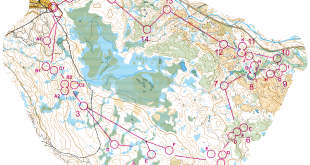
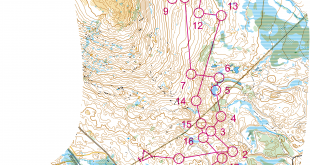
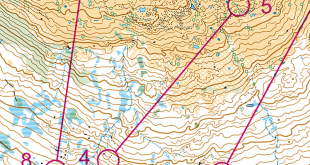
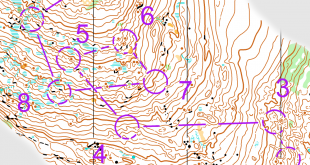
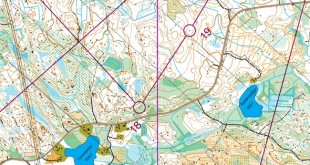
Wasn’t it first that Merja Rantanen was supposed to make it to the final as a lucky loser with Mari Fasting? (or do I remember wrong) Was there a timing mistake for the 1st semi or what?
Answer for myself:
“First it looked like that Rantanen would make it to the final with her time, but later it turned out that the times for the first semifinal were announced incorrectly.” (YLE)
Well, guys… Do you really consider such a stuff interesting to see? It was a miserable course which make it really boring for me to watch as for an orienteer. Everybody just follows each over, splits just occasionally and that splits do not affect the results almost at all. Following a gps translation of an ordinary say middle is much more interesting for me.
But also, does anybody really know any single person out of O-community which calls this “performance” interesting to watch? I suspect, that 3000m in athletics looks much much more exciting for them!
I really beleive this is an absolute dead way of orienteering.
… not my kind of entertainment either, but some seem to like it. I’d be much more happy with a long- or middle distance race with proper GPS-tracking, a proper red group start list to make the excitement rise gradually, some headcam action etc.
But as people find different concepts interesting to watch, I see no problem in developing the KnockOut sprint concept in parallel with a good long distance (or middle distance) concept. I think they speak to a different audience.
For the KnockOut sprint (or any mass start event) to be interesting, I think it needs to somehow ensure that the runners can not know if they have the next control in common with the other runners, i.e. you’d need map exchange and some sort of forking. One control would be enough (and it would be a bit boring the second time to a similar control for the runner) – the important thing is for the runners to not be certain that they have the same control as the others next, so they will have to think independently. Even having all the course equal but the runners thinking that there was forking would be good enough:) I’ve tried to advocate this view many times.
I thought the TV coverage was good and that it was a huge step forward compared with last year’s Gamla Stan coverage. Parts of the production were a bit rough – a few times the GPS tracking didn’t work and some of the camera shots weren’t great. I think a non-orienteer would have understood what was going on and would have been able to follow the action. I think there is value in presenting the sport to non-orienteers.
I hope we’ll see more experiments with the format and how the events are covered. I’m optimistic that it can be improved.
Yes, as I wrote on the LiveBlog, I think it was a lot better than last year. Many steps in the right direction. And I also think developing the KnockOut sprint concept along with other concepts is a good idea.
I absolutely agree with Okansas and Jan. The improvements compared to last years competition were huge; there were some route choises, the TV broadcast was better, Swedish commentators were good…
But it’s true that organisers should try to increase the importance of orienteering. Jan’s idea to introduce a map exchange would make it more exciting ’cause we could see some mistakes too. If map exchange is “too much”, wouldn’t even small butterfly loops make it at least a bit better?
I would add , L Gustafsson and L Eliasson has been placed top three in the two “finals”, but is still far behind the top in the total. Lysell is not even top 10.
I know it is actually the time in the qualification that counts for the total, and not the time in the final. I did enjoyed the broadcast, but prefer traditional orienteering.
I thought it was really boring as it didn’t look like orienteering at all – just who could keep up and follow the leader until a sprint finish. How about building a labyrinth in the arena for some real head to head navigation?
To make it even more funny why not IOF consider the following minor changes:
1. Change o-rules to exclude unpassable walls completely, make olive painted territories passable, and leave only forbidden areas marked in red/magenta.
2. Invite traceurs (http://en.wikipedia.org/wiki/Parkour) for ‘mixed fights’ with orienteeres – for 8-9 min runs they could be highly competitive in urban areas after some city o-training.
Expected advantages:
1. Exremely TV-favourable
2. Obviously more attractive for young people
3. Could involve participants from non-IOF member countries
4. Will force orienteers to develop, improve their physical cnditions and acquire completely new skills.